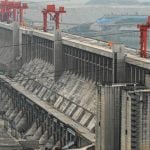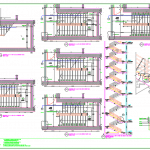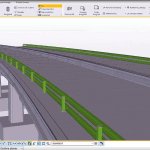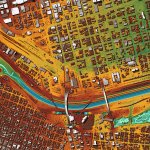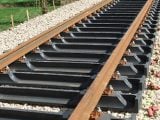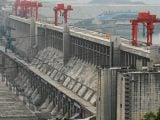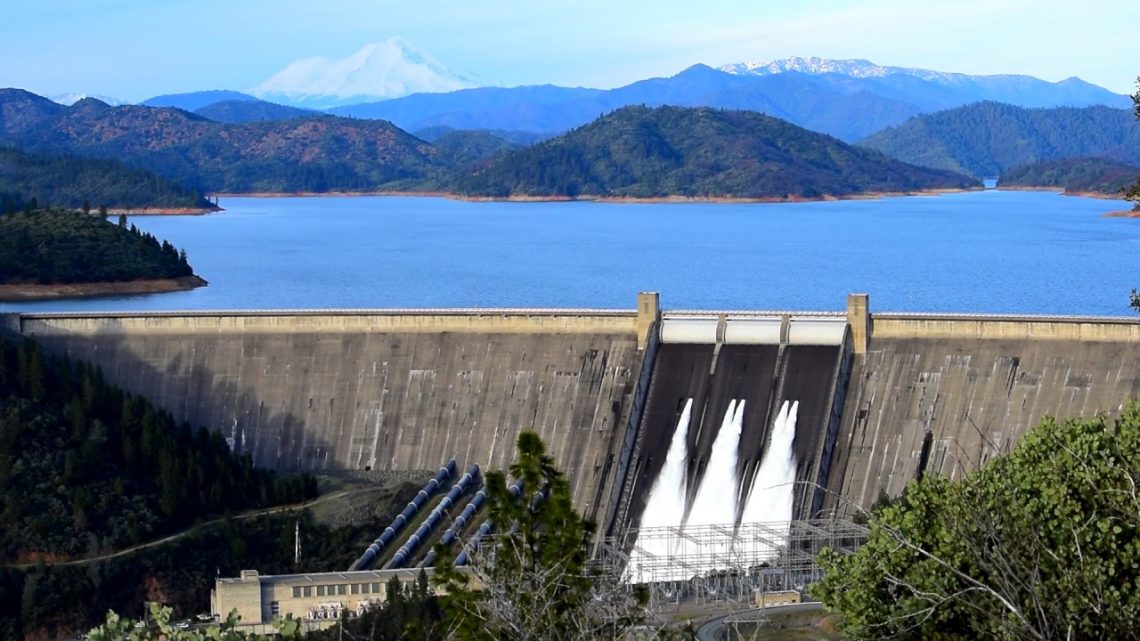
Choice of site and type of dam
31 October 2018Table of Contents
Choice of site and type of dam
Dam types can be classified in different categories according to the material used in construction and how they withstand the thrust of water:
- homogeneous drained earthfill dams, either zoned or with a man-made impervious element;
- gravity dams, whether concrete or RCC;
- arch dams;
- and buttress or multiple arch dams (not dealt with here).
Fill dams are flexible structures while the other types are rigid.The main parameters to be taken into account in choosing a dam site and type are the following:
- topography and inflow in the catchment area;
- morphology of the river valley;
- geological and geotechnical conditions;
- climate and flood regime.
In many cases, after consideration of all these aspects, several types of dams will remain potential candidates. Economic considerations are then applied to rank the available alternatives.
1. TOPOGRAPHY AND INFLOW IN THE CATCHMENT AREA
If we ignore the case of lakes for recreational purposes and small dams for hydroelectric power generation, reservoir storage is the main factor influencing the entire dam design. The objective is in fact to have a volume of water available for increasing dry weather river flow, irrigation or drinking-water supply, or free storage capacity to attenuate flooding.
The first task therefore consists in calculating the volume of water that can be stored in a basin, possibly at several different sites. A first approximation can be achieved using a 1/25 000 scale map with contour lines every 5 or 10 metres, except for reservoirs with storage of several tens of thousand cubic metres. The second task will then be to check whether conditions in the catchment area are such that the reservoir will be filled and to calculate the risk of shortfall.
2. MORPHOLOGY OF THE RIVER VALLEY
A dam is by nature linked to an environment. The morphology of the river valley therefore plays a vital role in the choice of a dam site and the most suitable type of dam.
Of course, the ideal and most economical location will be a narrow site where the valley widens upstream of the future dam, provided that the dam abutments are sound (i.e. a narrowing with no zones prone to rockfall or landslide).
Such a site is rarely found, either because the natural structure of a valley does not offer any point of narrowing or because the choice of the site is not solely dependent on engineering considerations.
As a first approach, a wide valley will be more suitable for construction of a fill dam.
A narrow site will be suitable for a gravity dam as well, and a very narrow site will be suitable for an arch. In every case, of course, provided that the foundation is acceptable.
3. GEOLOGY AND FOUNDATION CONDITIONS
The nature, strength, thickness, dip, jointing and permeability of the geological foundations at the site are a set of often decisive factors in selection of the dam type.
ROCK FOUNDATIONS
Except for severely jointed rock or rock with very mediocre characteristics, rock foundations are suitable for construction of any type of dam, provided that suitable measures are taken to strip off severely weathered materials and, if necessary, treat the foundation by grouting. Fill dams will always be suitable. For the other types, requirements are more severe for RCC, still more for conventional concrete, and finally most stringent for arch dams. The most important aspect is cracking (faults, joints, schistosity).
GRAVEL FOUNDATIONS
Provided that they are sufficiently compacted, gravel foundations are generally suitable for earth or rockfill dams, at least in terms of mechanical strength. Leakage must be controlled by suitable impervious barriers and drainage systems. In practice however, this type of foundation essentially is found on rivers with high flows. The dam must
therefore be able to discharge high floods, which precludes earthfill dams. Very small concrete dams may also be suitable provided precautions are taken with leaks and seepage (risk of piping) and with differential settlement.
SANDY-SILT FOUNDATIONS
Silt or fine sand foundations can be suitable for construction of earthfill dams, and even, in exceptional cases, for very small concrete gravity dams provided strict precautions are taken.
CLAY FOUNDATIONS
Clay foundations almost automatically impose the choice of a fill dam with slopes that are compatible with the mechanical characteristics of the geological formations.
4. AVAILABLE MATERIALS
Availability, on the site or near it, of suitable materials to build the dam has a considerable influence and one that is often decisive in choosing the type of dam:
- soil that can be used for earthfill,
- rock for rockfill or slope protection (rip-rap),
- concrete aggregate (alluvial or crushed materials),
- cementitious materials (cement, flyash, etc.).
If it is possible to extract the materials from the reservoir itself, reservoir storage can be increased. This also usually keeps the cost of transport and restoring borrow areas to a minimum.
As a general rule, if silty or clay soil of satisfactory quality (fines content, plasticity, condition) and quantity (1.5 times or twice the volume of fill required) is available, a dam construction alternative using homogeneous earthfill or quarry-sorted materials – setting aside the coarsest materials for the downstream shoulder – will be the most economical provided that the flood flows to be discharged are moderate.
If only a limited quantity of impermeable materials, and coarse or rockfill materials as well, is available, the possibility of a zoned earthfill dam or a rockfill dam with a watertight core can be considered. The disadvantage of this alternative is placement in zones, which is all the more complicated when the site is narrow, hindering movement of the machinery.
If only coarse materials are available, they can be used to build a homogeneous embankment with a watertight diaphragm wall built in the centre of the dam, by grouting after the fill has been placed or by an upstream watertight structure (concrete or bituminous concrete facing).
If only rockfill is available, a compacted rockfill dam with external watertight structure (geomembrane, hydraulic concrete or bituminous concrete facing) on the upstream face, will be suitable. A concrete alternative, especially RCC, can also prove to be competitive provided the foundation is good enough (rock or compact ground) with no need for excessive excavation.
5. FLOODS AND FLOOD DISCHARGE STRUCTURES
The cost of flood discharge structures depends on the hydrological characteristics of
the catchment area.
When the catchment area is large and floods are likely to be high, it may be advantageous to combine the dam and spillway functions and build an overspill dam.
On the other hand, if the spillway can be kept small, a fill dam will be preferred if all other conditions are equal.
When construction of the spillway would require significant excavation, the possibility of using the excavated materials will also be a factor in favour of building a fill dam.
When a tunnel is required for temporary diversion of the river during the work, it can usefully be incorporated into the flood discharge structures, if necessary increasing its cross-section slightly.
The choice of an RCC dam can be attractive if it is a means of shortening construction lead time and removing the risk of damage from flooding of the site before construction is complete, a risk that, with any other alternative, would mean building costly diversion or protection structures.
6. ECONOMIC CRITERIA
In many cases, the considerations set out above will be sufficient to select several types of dam as potential alternatives. For example, if the foundation is rock, loose materials are available near the site and flood flows are high, the choice will be between an RCC dam and an earthfill dam with a costly spillway.
The studies must then be pursued for these two types of dam, taking care to refine the cost estimates as the studies progress. As soon as one of the dam types seems significantly more economical, it is preferable to waste no further time on the other option.
CONCLUSIONS ON SELECTING A TYPE OF DAM
The choice of a type of dam is imposed by natural conditions in many cases, with no need for in-depth investigations. For example, if the rock substratum is at a depth of more than 5 metres, the only reasonable alternative will be a fill dam, at least for any project less than 25 metres high. In some regions, the geological context is such that
only one type of dam is usually built.
In other cases, the choice of dam type will be a compromise between different aspects – type of foundation, availability of materials in the vicinity, hydrology – to arrive at the best option economically speaking.
However, it is always an advantage to make a decision as quickly as possible, as a rule after the feasibility studies.

